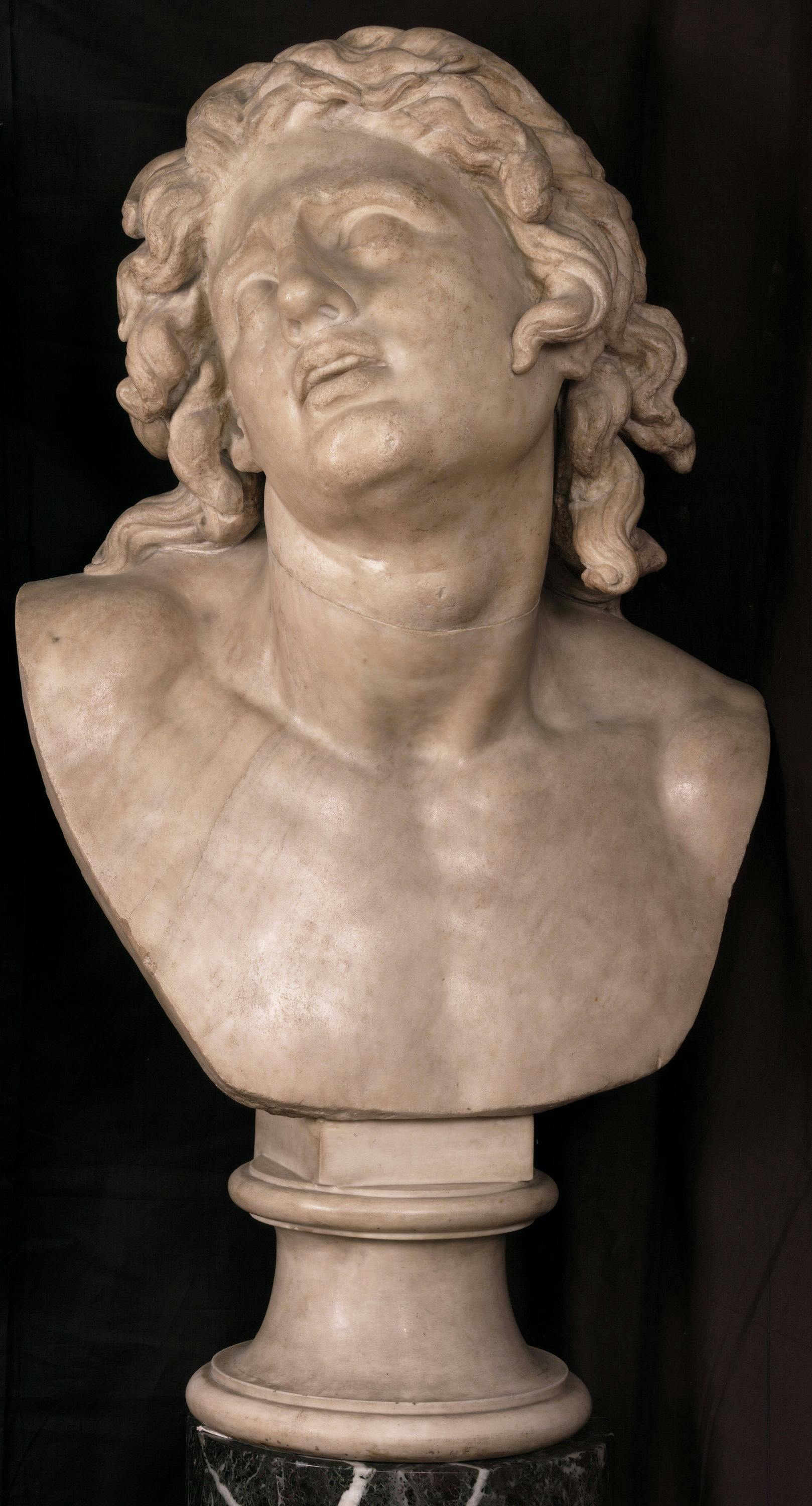Head of the so-called Dying Alexander
Hellenistic art
The sculpture, which is bigger than human size, depicts a male figure in his youth, with long hair drawn in thick, full-bodied strands and features characterised by a pathetic expression: the mouth is half-closed, the gaze is frowned and turned upwards; the same goes for the head, which is also subjected to a strong twist to the right. The base of the neck and the entire torso were restored in modern times, as well as the corresponding part of the hair, a few strands on the left side of the face, the back of the head and a good part of the nose. Traces of rework are present also on the backside at the top of the head.
The piece has been known since 1550, when it was listed as a portrait of the dying Alexander in the collection of Cardinal Pio da Carpi in Campo Marzio, Rome. The theory of the identification with the Macedonian ruler, which remained popular until the discovery of the Azara head in Tivoli in 1779, played a fundamental role in the fortunes of this piece among critics (Mansuelli 1958 pp. 94-96). Approximately in 1580, when the sculpture arrived in Florence, it became a source of inspiration for paintings (Monaco 1996, with bibliography) and was also replicated in marble, as shown by a head currently preserved in the Museo Archeologico Nazionale of Florence, and three times in porphyry in the workshop of the Ferrucci del Tadda's family (Monaco 2007). The history of the restoration, which was complex and influenced by the changes in taste and opinion regarding the figure of Alexander, also testifies to the great fortune of this sculpture (Mansuelli 1958, pp. 94-96, Monaco 2007).
The head is a rare Greek original of high artistic quality from the late Hellenistic period. Even though it does not depict Alexander, it is part of the large group of contemporary works that were inspired by portraits of the ruler. A replica of the sculpture was recently identified in a head from the Roman period, which was preserved in Cuba in a private collection and whose observation allowed to hypothesise that the original pertained to a monumental complex of some renown in ancient times (Monaco 2007). Once the theory of the identification with Alexander lost its credit, traditional critics used to relate the sculpture to the iconography of the Giants of the Pergamon Altar (Mansuelli 1958, p. 95). On the contrary, the current orientation links the work to a series of representations of sea creatures caught in the act of emerging from the sea (Schwarzenberg 1969, p. 398, note 4; Munich 1996; Munich 2007).
M.C. Monaco, Testa del cosiddetto Alessandro morente, in L’officina della maniera. Varietà e fierezza nell’arte fiorentina del Cinquecento fra le due repubbliche 1494-1530, Catalogo Mostra, Firenze, p. 142-143, n° 35; M. C. Monaco, Ancora sull’Alessandro morente della Galleria degli Uffizi, Mitteilungen des Deutschen Archäologischen Instituts, 113 (2007), pp. 175-206; V. Saladino, Musei e Gallerie. Firenze – Gli Uffizi. Sculture antiche, Firenze 1983; E. Schwarzenberg, From the Alessandro morente to the Alexandre Richelieu. The portraiture of Alexander the Great in seventeenth-Century Italy and France, JWCI 32, pp. 398-405.
